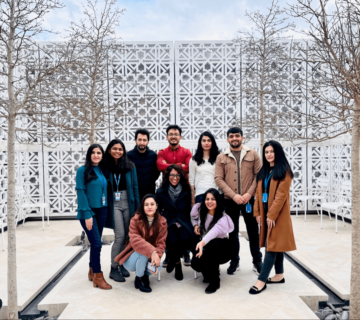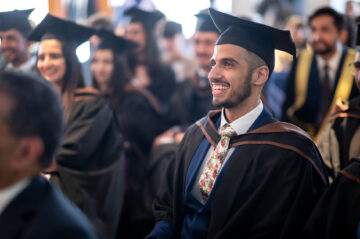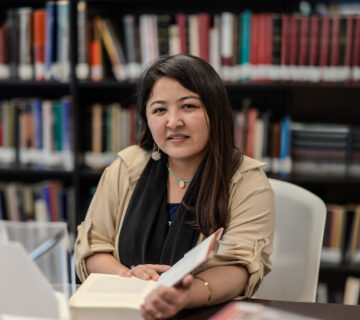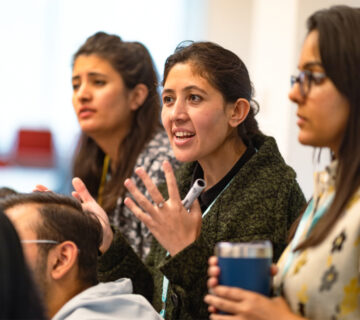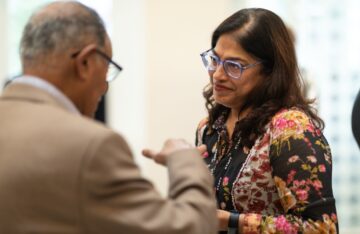While in Granada, the students spent a day at the Alhambra Palace, built in the 13th and 14th centuries by the Sultans of the Nasrid dynasty, the last Muslim rulers of al-Andalus. Among the highlights of the students’ visit to the walled city were the Generalife gardens, the muqarnas decorations at the Nasrid Palace, and the inscription “Wa La Ghalib ila Allah” (There is no victor except God) repeated in Arabic calligraphy throughout the complex.
The students also traveled north to visit the Great Mosque of Cordoba built by the Umayyad rulers who settled in Spain in the eighth century CE. The mosque is among one of the most important Muslim structures still standing in Europe.
Despite being captured by Ferdinand III in 1236 and being converted into the city’s cathedral, many of the original features of the mosque can still be seen. The hypostyle structure, filled with columns supporting the two-toned piers and arches, remains as do the mihrab and minbar. Students who had spent the summer in Syria for their Arabic immersion programme could make connections between the architecture of the Umayyad Dynasty in Spain and in Damascus.
On their last day, the students enjoyed free time to visit local monuments and sample the cuisine in Granada. Many walked through the streets of Albayzin, the old Muslim quarter, where old minarets stand alongside the first new mosque to be built in Granada in over 500 years.

